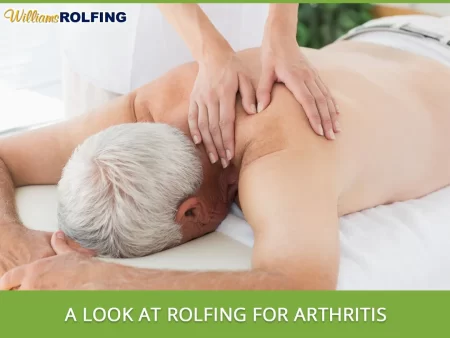 Massage therapy can help reduce pain and stiffness in joints affected by arthritis. It can also help improve the range of motion and promote relaxation. Some types of massage that may be beneficial for people with arthritis include Swedish massage, deep tissue massage, myofascial release, and rolfing massage. Make sure you consult with a healthcare provider before starting any new treatment, including rolfing – something that we’ll tell you more about here.
Massage therapy can help reduce pain and stiffness in joints affected by arthritis. It can also help improve the range of motion and promote relaxation. Some types of massage that may be beneficial for people with arthritis include Swedish massage, deep tissue massage, myofascial release, and rolfing massage. Make sure you consult with a healthcare provider before starting any new treatment, including rolfing – something that we’ll tell you more about here.
Does rolfing massage for arthritis work?
Improving the quality of life and boosting mood can be achieved through various means, such as regular exercise, healthy eating habits, socializing with loved ones, practicing mindfulness, and engaging in hobbies or activities that bring joy and fulfillment. It is important to prioritize self-care and take proactive steps toward maintaining a positive outlook on life. One way to prioritize self-care is by getting a rolfing massage. Doing so will reduce pain, increase blood flow to your joints, improve your range of motion, boost your mood, and make your overall quality of life better.
What is rolfing for arthritis?
Rolfing is commonly used in physical therapy and rehabilitation programs to help patients recover from injuries or surgeries. It involves a combination of exercises, stretches, and manual therapies that are tailored to each individual’s specific needs. The goal is to improve overall physical function.
How can you improve the benefits of rolfing?
It is important to note that finding a therapist who specializes in treating arthritis can greatly improve the effectiveness of treatment. Incorporating lifestyle changes such as regular exercise between sessions to keep your muscles and joints loose and taking time to recover between appointments can also aid in managing symptoms. Additionally, make sure you maintain regular appointments with your massage therapist.
It’s important to communicate with your practitioner about any discomfort or pain you may experience during the session (mild discomfort is normal, especially in sore areas). This will help them adjust the pressure and technique to ensure a comfortable and effective treatment. Additionally, you should consider your personal preferences and goals to ensure that rolfing is right for you.
Committing to a regular rolfing massage practice will help you see long-term results. Part of this has to do with engaging in certain activities after your massage session is over. Try taking a warm bath with Epsom salts, especially if you’re feeling achy and sore (temporary inflammation is normal). Additionally, it is recommended to drink plenty of water after a massage to help flush out toxins released during the treatment. You’ll also want to avoid alcohol and caffeine after a massage as they can dehydrate the body and undo the relaxation achieved during the treatment.
What does all this mean?
Rolfing is a complementary treatment for patients with rheumatoid disease as it’ll help reduce pain and stiffness. It’s a form of deep tissue massage that aims to realign the body’s structure and balance. It can also improve posture, balance, flexibility, and overall well-being. Research has shown that it might help in reducing pain and stiffness associated with arthritis. If you are looking for a skilled Rolfing practitioner, contact Williams Rolfing in Tampa, FL.
Picture Credit: iStock
